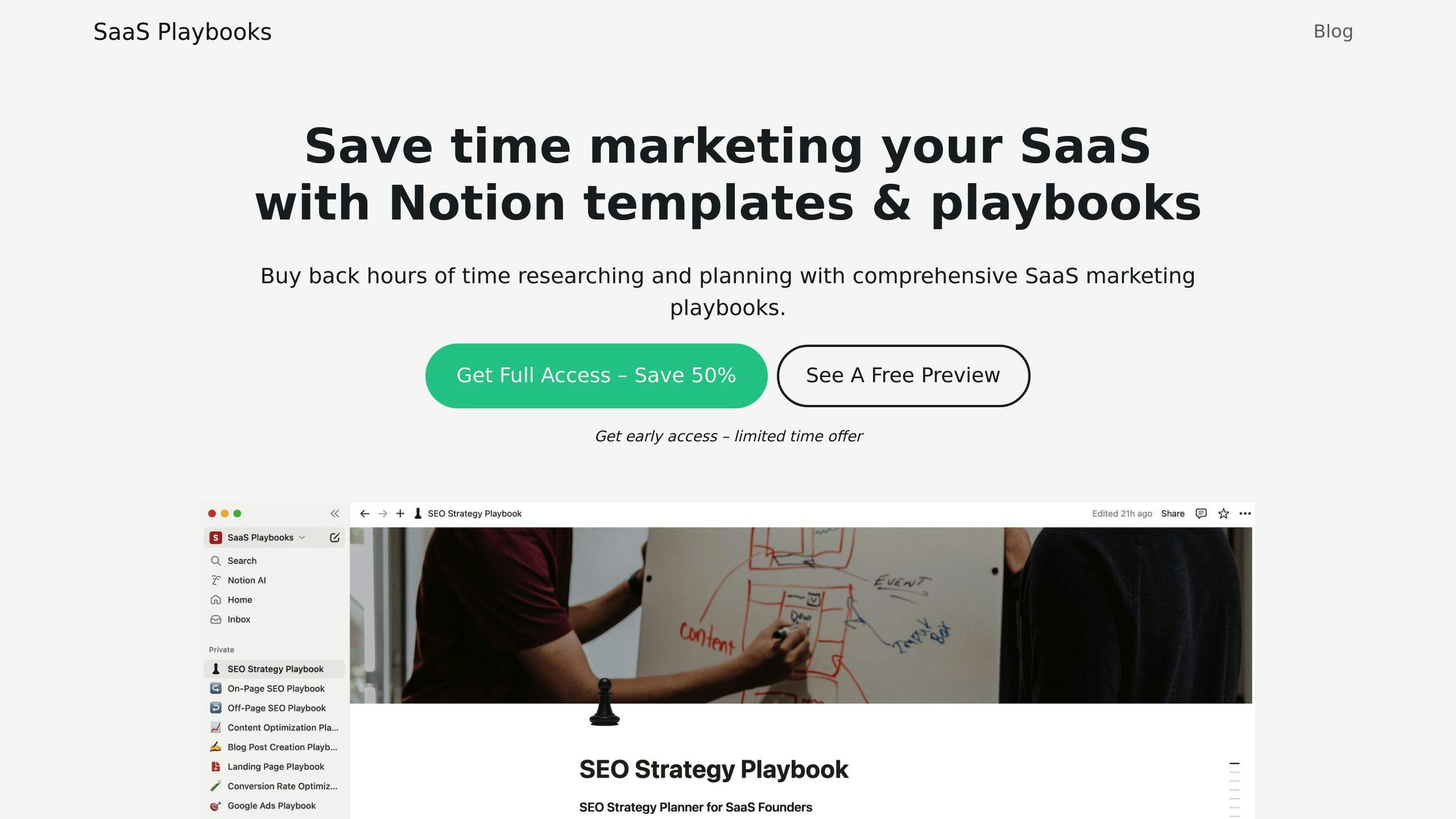Churn Rate Analysis: Pricing Insights

Want to reduce churn and keep more customers? Here’s what you need to know:
- Churn Rate Basics: Measures how many customers leave your SaaS product in a set time. SMBs typically see 3-7% monthly churn, while enterprise companies aim for under 1%.
- Key Insight: Trends in churn rates matter more than exact numbers. For example, a 5% churn rate might be fine for SMBs but is a red flag for enterprises.
- Pricing’s Role: Clear, value-based pricing improves retention. Customers stick around when they feel they’re getting their money’s worth.
- Pricing Models Compared:
- Flat-Rate: Simple but rigid; higher churn (5-7%).
- Tiered: Flexible options; lower churn (3-5%).
- Usage-Based: Scales with customer needs; heavy users stay, light users churn.
- Annual Plans Help: Discounts for yearly subscriptions reduce churn by locking in customer commitment.
Quick Comparison of Pricing Models
| Pricing Model | Average Monthly Churn | Key Features |
|---|---|---|
| Flat-Rate | 5-7% | Single price for all users |
| Tiered | 3-5% | Multiple pricing levels, scalable |
| Usage-Based | Varies | Pay as you use, flexible for growth |
Takeaway: Match pricing to customer needs, be transparent, and focus on delivering value. Lowering churn is all about building trust and meeting user expectations.
Related video from YouTube
Churn Rate Benchmarks for SaaS Companies
Let’s look at the real numbers that show how different SaaS companies keep (or lose) their customers. The data tells an interesting story about how small businesses and enterprise companies perform differently.
Churn Rates by Company Size
Here’s the reality: Small businesses and enterprise SaaS companies lose customers at very different rates. Enterprise companies keep things tight with monthly churn under 1%. But small and medium businesses? They see higher numbers – between 3-7% monthly churn.
Why such a big gap? It comes down to how these businesses work. Enterprise customers can’t just switch providers overnight – they’re locked into longer contracts, they’ve spent time and money setting everything up, and changing providers would cost them big time.
"Absolute churn rates aren’t as important as changes in churn rates." – Ryan Law, CoBloom
Monthly vs. Annual Churn Rates
The numbers look different when you zoom out from monthly to yearly view:
| Company Type | Monthly Churn | Annual Churn |
|---|---|---|
| SMBs | 3-7% | 31-58% |
| Enterprise | <1% | 6-10% |
Those yearly numbers might make you do a double-take. They’re much higher than the monthly rates because losses stack up over time. The good news? While churn hit its peak in 2021, companies are getting better at keeping customers in 2024.
Here’s what matters most: Compare yourself to similar companies. If you’re running an SMB-focused product, don’t panic over a 5% monthly churn – that might be normal for your market. But that same rate would set off alarm bells at an enterprise company. Focus on finding out why customers leave and fix those issues head-on.
sbb-itb-4c080d3
How Pricing Models Influence Churn
Let’s look at how different pricing models affect customer retention in SaaS companies, based on real data.
Flat-Rate and Tiered Pricing: A Comparison
When it comes to pricing, simpler isn’t always better. Flat-rate pricing offers one price for everyone – easy to understand but rigid. Tiered pricing gives customers options that match their needs, leading to better retention.
Here’s how these models stack up:
| Pricing Model | Average Monthly Churn | Key Characteristics |
|---|---|---|
| Flat-Rate | 5-7% | One-size-fits-all, fixed features, easy to understand |
| Tiered | 3-5% | Multiple options, room to grow, needs clear explanation |
The Pros and Cons of Usage-Based Pricing
Usage-based pricing tells an interesting story about customer behavior. The more customers use your product, the longer they stick around. It makes sense – heavy users get their money’s worth. Light users? They often leave when they realize they’re overpaying.
Take Amazon Web Services (AWS). Their pay-for-what-you-use model works great for companies like Netflix, who can scale their usage up or down as needed. This flexibility keeps customers happy and on board.
"Just because customer churn is simple doesn’t mean it’s not useful. It’s probably the only measurement a startup needs to address retention in its infancy." – Steli Efti, Close.io CEO
The Role of Pricing Transparency in Retention
Being upfront about pricing builds trust. It’s that simple. Companies that show their full pricing details – no hidden fees or surprise costs – tend to keep customers longer.
Look at Slack: they spell out everything in their pricing tiers. Features? Check. User limits? Check. Costs? All there in black and white. This clarity helps explain why customers stick with them.
The secret sauce? Make your pricing crystal clear. Show all costs, limits, and possible changes upfront. When customers know exactly what they’re getting into, they’re more likely to stay and grow with you.
Pricing Strategies to Lower Churn
Match Pricing to Customer Needs
Want to keep customers around longer? Start by matching your prices to where they are in their journey.
Think about it like buying clothes for a growing kid – you need different sizes as they get bigger. The same goes for SaaS pricing. Let customers start small and bump up their plan as they grow.
Take Dropbox‘s smart approach: They hook users with free personal accounts that naturally lead to business plans when teams expand. This strategy works so well that their monthly churn stays under 3.5%. For their big enterprise customers, it’s even better – churn drops below 1% because these comprehensive plans fit exactly what large companies need.
Use Value-Based Pricing to Retain Customers
Here’s the thing about pricing: It’s not just about the numbers – it’s about what customers think they’re getting for their money.
When customers feel they’re getting more value than what they’re paying for, they stick around. This is especially true for enterprise clients, who often become long-term partners when they see clear returns on their investment.
Pro tip: Keep your ear to the ground. Watch how customers use your product and listen to their feedback. This helps you spot gaps between what they’re paying and what they think it’s worth.
Use Tools Like SaaS Playbooks to Build Pricing Plans

Creating pricing plans isn’t just about picking numbers out of thin air. SaaS Playbooks helps you build plans that keep customers happy and staying longer.
Here’s what makes pricing plans work:
- Annual contracts with sweet discount deals that make customers think twice about leaving
- Crystal-clear pricing and features (no hidden surprises!)
- Price tiers that match different stages in your customer’s growth
Summary of Key Points
Let’s look at how smart pricing affects customer retention in SaaS companies.
Big enterprise companies keep more customers around thanks to their long-term contracts and the hassle of switching providers. Small and medium businesses (SMBs) lose customers more often because they typically work with shorter commitments. The numbers tell an interesting story: monthly customer loss dropped from 3.5% in Q1 2024 to 2.5% by April 2024, showing that well-planned pricing works.
Here’s what makes a difference: when customers know exactly what they’re paying for, they stick around longer. Clear pricing builds trust and helps avoid those nasty surprises that make customers want to leave. Companies that tie their pricing to customer value tend to keep more customers – we’re talking annual loss rates below 5%.
Take Buffer and Baremetrics as examples. Buffer deals with a 38% yearly customer loss, while Baremetrics’ data shows that SMBs generally struggle to keep customers. But don’t worry – there’s hope. With the right pricing approach and planning, these numbers can improve.
Need help getting started? SaaS Playbooks offers ready-to-use templates and frameworks. Their Pricing Strategy Builder helps you create clear pricing tiers that make sense to customers and can grow as their needs change. It’s like having a roadmap for pricing that works.